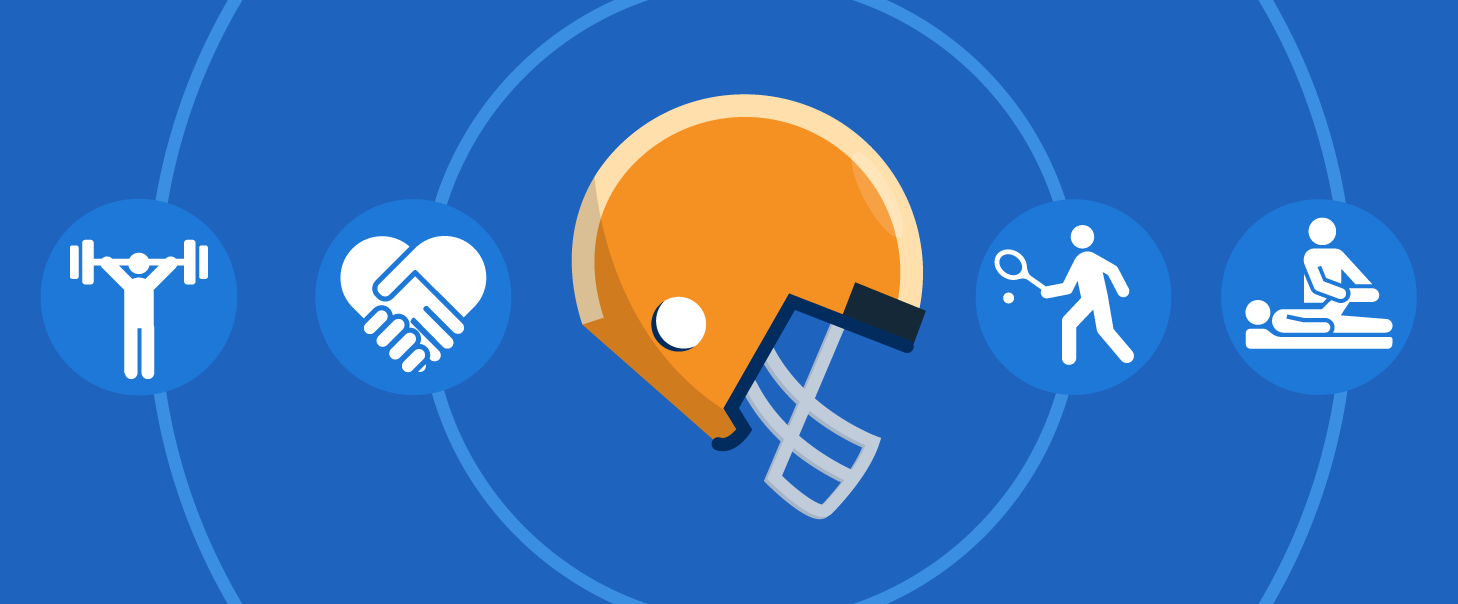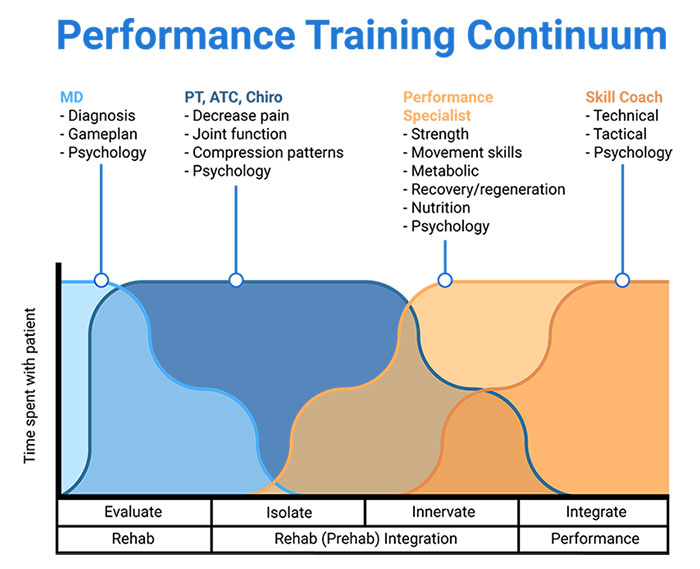Why You Should Adopt an Athlete-Centered Model

Imagine that you are a professional athlete. You have all of the skill and talent needed to have a successful career. Unfortunately, you have hurt your knee.
It’s the off-season and you are at home, seeing a physical therapist to rehab your knee. You also need to work out, so after an hour of therapy, you drive across town to see your strength coach and get a work out in. The athletic trainer from your team is calling, asking you how you are doing. The GM wants to know if you will be ready for the start of the season.
You have lost some lean muscle mass from not training as hard because of your knee injury. You are not sleeping well because you are stressed about the injury, wondering if everyone is on the same page and if you will return to play in top form. Your family relationships become stressed, because you are tired from not sleeping. This story can go on and on, spiraling downward, and it happens every day in the world of professional sports.
Looking beyond the injury
As healthcare practitioners who work with athletes, we need to look beyond the orthopedic injury at hand. Once we begin working with an athlete, we become part of a much more global system to return that athlete to play in an ethical, efficient and safe manner.
Returning an athlete to play is much more involved than simply rehabilitating an injury. It requires an athlete-centered mindset, placing ourselves in a complete service role, ego aside, working within a team of professionals who have the athlete’s best interest in mind. We must adopt an athlete-centered model.
What is an Athlete-Centered Model?
The athlete-centered model places the athlete at the center core of the program, with all professionals working together to ensure the athlete attains his or her goals.
Playing together
The health care providers leave their letters at the door so to speak, working together as one team with the athlete’s best interest in mind. Everyone – including the doctor, the chiropractor, the physical therapist, the athletic trainer, the massage therapists, the personal trainer, the strength coach and so on – brings a specialty to the table and can offer insight to help the athlete achieve his or her goals.
Taking the lead
Where the client lies along the Performance Continuum (see below) will depend on who is the “quarterback” of the client’s care at a given time. If the patient is post-operative, the doctor may be the quarterback, dictating precautions and contraindications from the surgery. As the rehab process moves on, the athletic trainer or physical therapist may become the quarterback, as the athlete is improving movement efficiency. When the client is ready for different training movements at various loads and speeds, the performance coach may become the quarterback. And finally, as that athlete begins to work on the technical and tactical aspects of his or her sport, the skill coach may play a leading role in assisting that athlete with the specifics of their sport and position.

Respecting contributions by other specialists
Everyone brings something to the table that should be valued and respected. There is no one person that can do everything for the athlete, from the operating room, to skill work and technique work on the field, as well as everything in between. In the athlete-centered model, everyone is involved in the process.
The roles of different people may be large or small, but everyone is involved, as everyone brings something special to the program. Each healthcare professional, performance coach, and skill coach must come together, bring their area of expertise, and work together to return the athlete to play. Ideally, our athletes return to their sport not only rehabbed, but as a stronger, healthier individual in general.
- Liebenson, Craig. Chapter 3: Bridging the Gap from Rehabilitation to Performance. Functional Training Handbook. 2014. Print.

